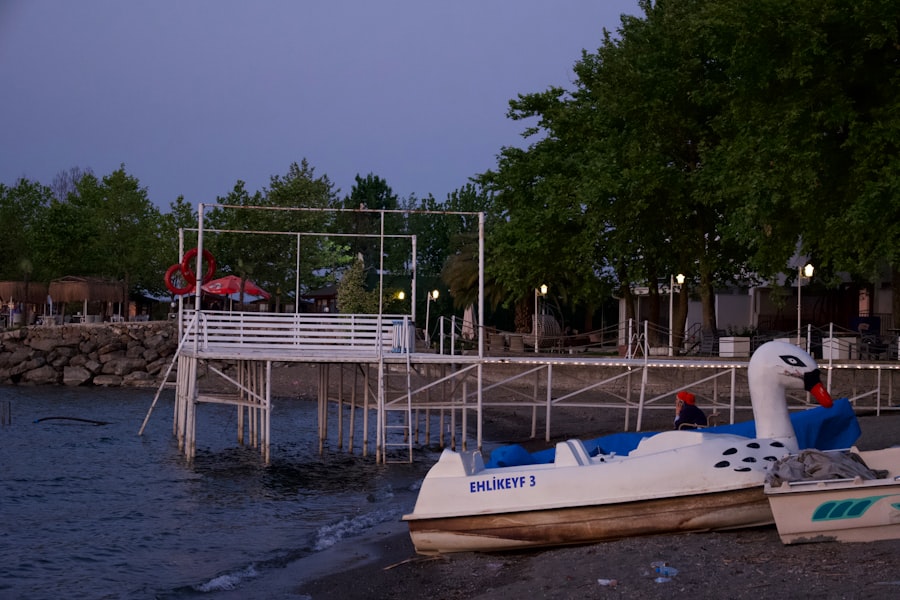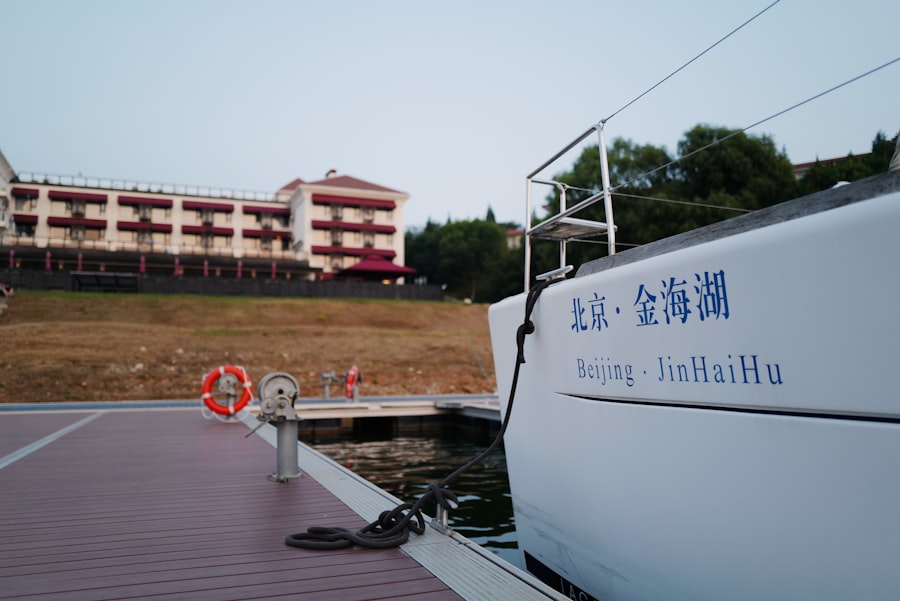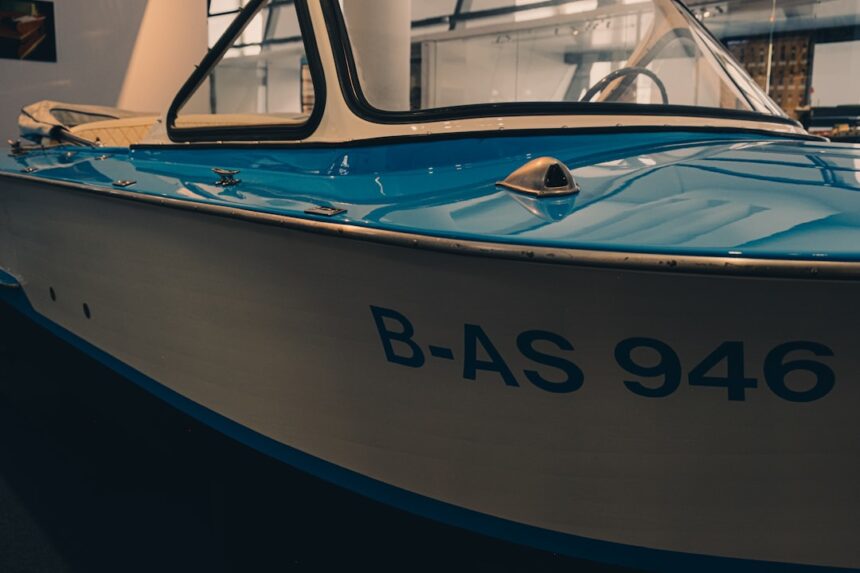The Kiel U Boat Base, located in the northern part of Germany, stands as a significant historical site that played a pivotal role during World War
Established in the early 20th century, this naval base became a crucial hub for the German submarine fleet, known as U-boats.
As the war progressed, the base evolved into a center of submarine warfare, where countless missions were planned and executed.
The importance of the Kiel U Boat Base cannot be overstated. It served not only as a logistical center for the German Navy but also as a symbol of Germany’s maritime ambitions. The base was equipped with extensive facilities, including docks, repair yards, and storage areas, which enabled the maintenance and deployment of U-boats.
As the conflict intensified, the base became synonymous with the German Navy’s efforts to disrupt Allied shipping and assert control over the seas. The legacy of the Kiel U Boat Base continues to resonate today, as it represents both the technological advancements of its time and the devastating impact of warfare on global history.
Key Takeaways
- Kiel U Boat Base played a crucial role in German naval operations during World War II, serving as a key strategic location for the German Navy.
- The construction and layout of Kiel U Boat Base were designed to accommodate and support the operations of German U-boats, with extensive facilities and infrastructure.
- The base was a prime target for Allied bombing campaigns, which aimed to disrupt German naval operations and weaken their military capabilities.
- The decline of Kiel U Boat Base in 1945 marked the diminishing power of the German Navy and the eventual surrender and occupation of the base by Allied forces.
- The legacy of Kiel U Boat Base in World War II is significant, and preservation efforts today aim to commemorate its historical importance and impact on the surrounding area.
Strategic Importance of Kiel U Boat Base in 1945

By 1945, the strategic significance of the Kiel U Boat Base had reached its zenith. As World War II drew to a close, the base was one of the last remaining strongholds for the German Navy. The Allies had made significant advances across Europe, and control of the seas was paramount for both sides.
The U-boats stationed at Kiel were tasked with disrupting Allied supply lines, targeting merchant vessels, and engaging enemy warships. This mission was critical for Germany’s survival as it sought to maintain its naval capabilities in the face of overwhelming odds. The base’s geographical position provided a tactical advantage that was hard to replicate elsewhere.
Situated near the entrance to the Baltic Sea, Kiel allowed submarines to launch surprise attacks against Allied convoys traversing these waters. The U-boats could quickly return to port for repairs and resupply, making them a formidable threat despite the deteriorating situation on land. As such, Kiel became a focal point for German naval strategy in 1945, embodying both hope and desperation as the war neared its conclusion.
Construction and Layout of Kiel U Boat Base
| Aspect | Metric |
|---|---|
| Construction Period | 1941-1943 |
| Size | Approximately 8 square kilometers |
| Number of U-Boat Pens | Approximately 60 |
| Depth of U-Boat Pens | Approximately 9 meters |
| Construction Materials | Reinforced concrete |
The construction of the Kiel U Boat Base began in earnest during World War I, reflecting Germany’s growing interest in submarine warfare. Over the years, it underwent significant expansions and renovations to accommodate an increasing fleet of U-boats. The layout of the base was meticulously designed to optimize efficiency and functionality.
It featured extensive dry docks capable of housing multiple submarines simultaneously, along with workshops for repairs and maintenance. In addition to its operational facilities, the base included barracks for personnel, administrative buildings, and storage areas for torpedoes and other supplies. The design emphasized security and secrecy, with fortified structures intended to withstand aerial bombardment.
As a result, Kiel became not just a base but a fortified complex that played a crucial role in sustaining Germany’s underwater warfare capabilities throughout the war.
Role of Kiel U Boat Base in German Naval Operations
The Kiel U Boat Base was integral to German naval operations during World War
It served as a command center where strategies were devised and missions were launched. The base facilitated training for submarine crews, ensuring that they were well-prepared for their perilous missions in hostile waters. The operational tempo at Kiel was intense, with submarines frequently departing on patrols aimed at disrupting Allied shipping routes.

Moreover, Kiel was home to some of the most advanced U-boats of the era, equipped with cutting-edge technology that allowed them to operate effectively in various conditions. The base’s role extended beyond mere logistics; it was a hub of innovation where new tactics were developed and tested. As such, Kiel became synonymous with Germany’s efforts to dominate naval warfare through submarine operations, leaving an indelible mark on military history.
Allied Bombing Campaigns against Kiel U Boat Base
As the war progressed and Allied forces gained momentum, they recognized the strategic importance of the Kiel U Boat Base and targeted it in their bombing campaigns. The Allies understood that crippling Germany’s submarine capabilities was essential to securing victory in Europe. Consequently, they launched numerous air raids aimed at destroying infrastructure and disrupting operations at the base.
These bombing campaigns were met with fierce resistance from German anti-aircraft defenses, but they nonetheless inflicted significant damage on the facilities at Kiel. Key installations were destroyed or rendered inoperable, hampering the ability of U-boats to launch effective missions. The relentless pressure from Allied air power underscored the vulnerability of even the most fortified naval bases and highlighted the shifting tides of war as Allied forces sought to dismantle Germany’s maritime strength.
The Decline of Kiel U Boat Base in 1945
By 1945, the decline of the Kiel U Boat Base mirrored the overall deterioration of Germany’s military situation. As Allied forces advanced into German territory and liberated occupied nations, resources became increasingly scarce for the beleaguered German Navy. The once-bustling base began to see fewer submarines returning from missions, as many were lost to Allied attacks or mechanical failures.
The decline was further exacerbated by internal strife within Germany and a lack of strategic direction from high command. With resources stretched thin and morale plummeting, the effectiveness of operations from Kiel diminished significantly. The base that had once been a symbol of German naval power now stood as a testament to the futility of continued resistance in the face of overwhelming opposition.
Surrender and Occupation of Kiel U Boat Base
As World War II came to an end in Europe, the surrender of German forces became inevitable. In May 1945, with Allied troops closing in on all fronts, the commanders at Kiel recognized that further resistance was futile. The surrender of the Kiel U Boat Base marked a significant moment in history; it symbolized not only the collapse of German naval power but also the broader defeat of Nazi Germany.
Following the surrender, Allied forces quickly occupied the base to prevent any potential resurgence of German naval operations. The occupation involved securing facilities and assessing damage while also taking stock of remaining resources and technology. This transition marked a new chapter in Kiel’s history as it shifted from being a center of military might to a site under Allied control.
Legacy of Kiel U Boat Base in World War II
The legacy of the Kiel U Boat Base is multifaceted and complex. On one hand, it represents Germany’s ambitious attempts at maritime dominance through innovative submarine warfare tactics that changed naval engagements forever. The technological advancements developed at Kiel contributed significantly to submarine design and operational strategies that would influence naval warfare long after World War
On the other hand, Kiel also serves as a reminder of the devastating consequences of war. The destruction wrought upon cities and communities due to military actions is an enduring aspect of its legacy. The base stands as a historical marker that encapsulates both human ingenuity in warfare and the tragic loss of life that accompanies such conflicts.
Impact of Kiel U Boat Base on the Surrounding Area
The impact of the Kiel U Boat Base extended beyond its immediate military significance; it also profoundly affected the surrounding area economically and socially. During its operational years, the base provided numerous jobs for local residents, contributing to economic growth in Kiel and its vicinity. Shipbuilding industries flourished as demand for submarines surged, leading to increased employment opportunities.
The presence of a military installation often brought with it an atmosphere of tension and uncertainty as local populations grappled with wartime realities. As Allied bombing campaigns intensified, civilians faced danger from air raids aimed at crippling military infrastructure.
Thus, while Kiel benefited economically from its naval base, it also bore witness to the harsh realities of war that impacted everyday life.
Kiel U Boat Base Today: Historical Significance and Preservation Efforts
Today, remnants of the Kiel U Boat Base serve as important historical sites that attract visitors interested in World War II history. Preservation efforts have been initiated to maintain key structures and educate future generations about their significance. Museums have been established to showcase artifacts related to submarine warfare and provide insights into life at the base during its operational years.
These preservation initiatives aim not only to honor those who served but also to foster understanding about the complexities of war and its lasting effects on society. By keeping alive the memory of places like Kiel U Boat Base, historians and educators strive to ensure that lessons from history are not forgotten but rather serve as cautionary tales for future generations.
Kiel U Boat Base’s Place in History
In conclusion, the Kiel U Boat Base occupies a prominent place in history as a symbol of both military ambition and human tragedy during World War
The legacy left by Kiel is one that encompasses technological innovation alongside profound loss—a duality that reflects broader themes present throughout human conflict. As preservation efforts continue today, they serve not only to commemorate those who served but also to remind society of the lessons learned from this tumultuous period in history. Ultimately, Kiel U Boat Base stands as a testament to both human ingenuity in warfare and the enduring impact that such endeavors can have on nations and communities alike.
The Kiel U-boat base in 1945 was a significant site during the final stages of World War II, serving as a crucial hub for German submarine operations. For those interested in exploring more about the strategic importance of such military installations during the war, an insightful article can be found on the topic of wartime strategies and their implications. You can read more about these historical insights by visiting this




